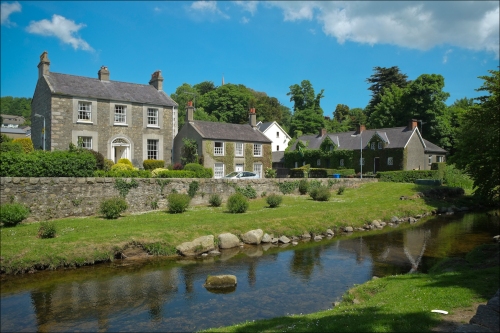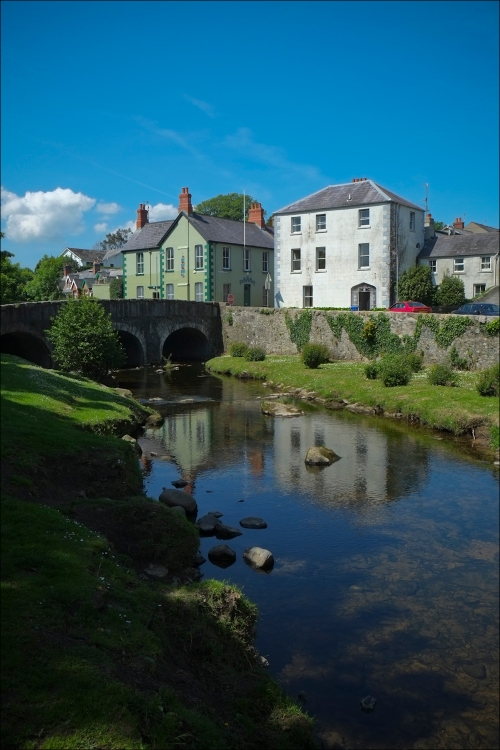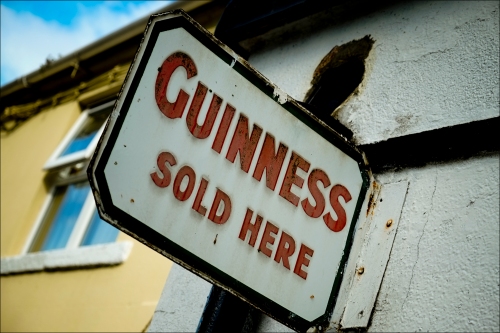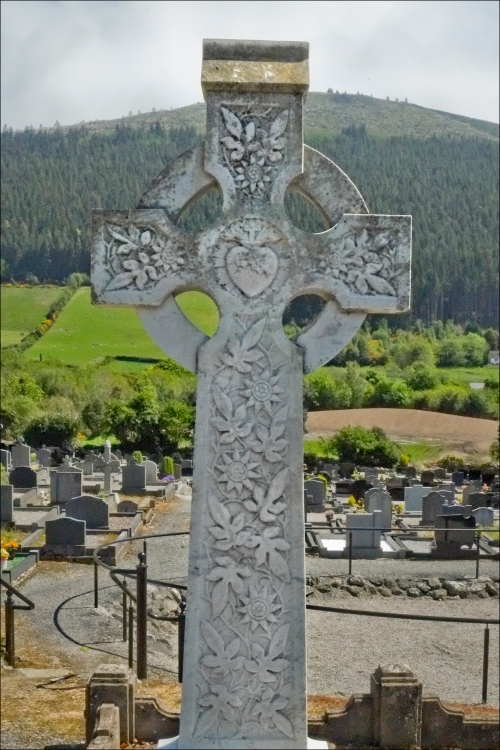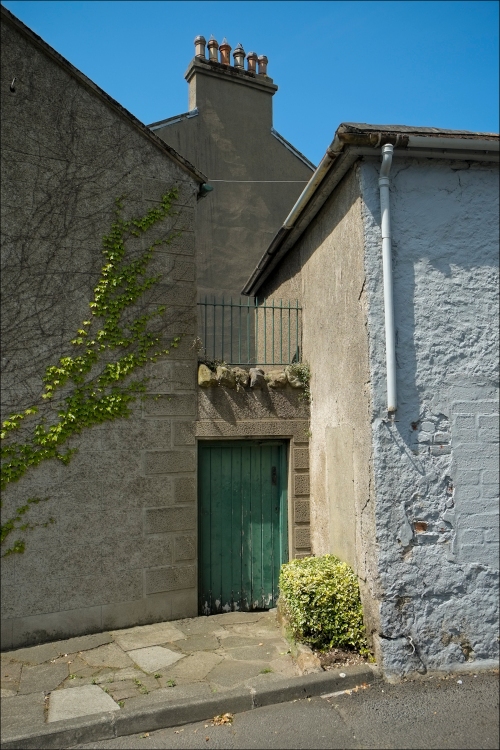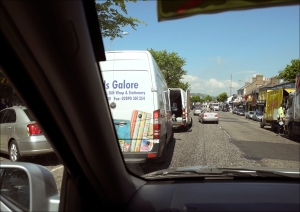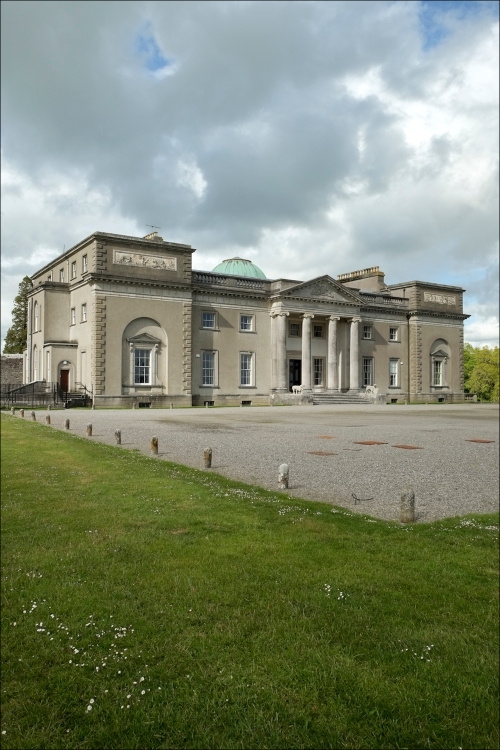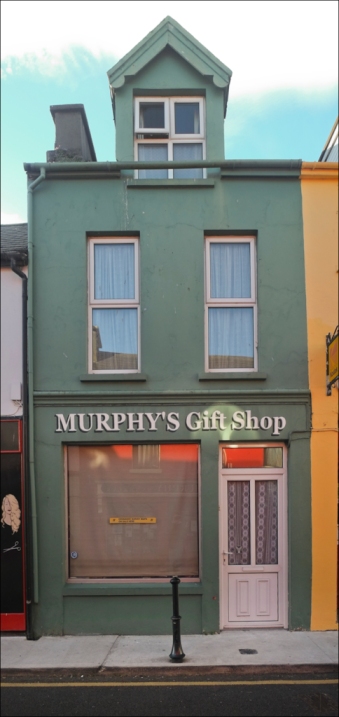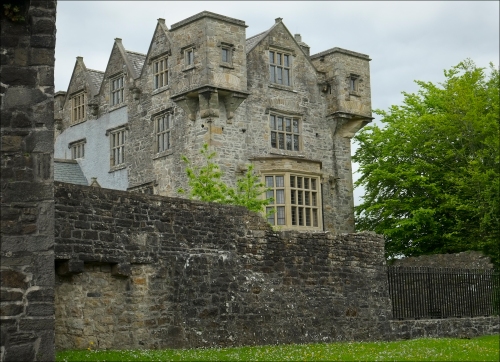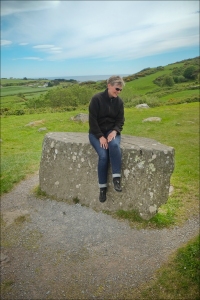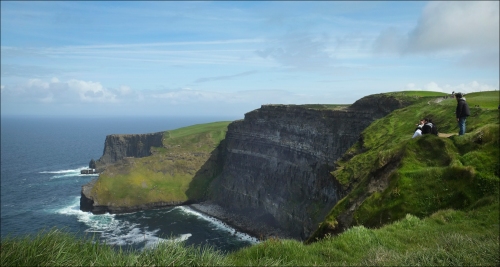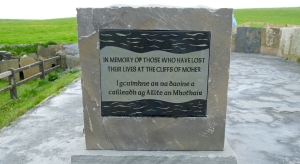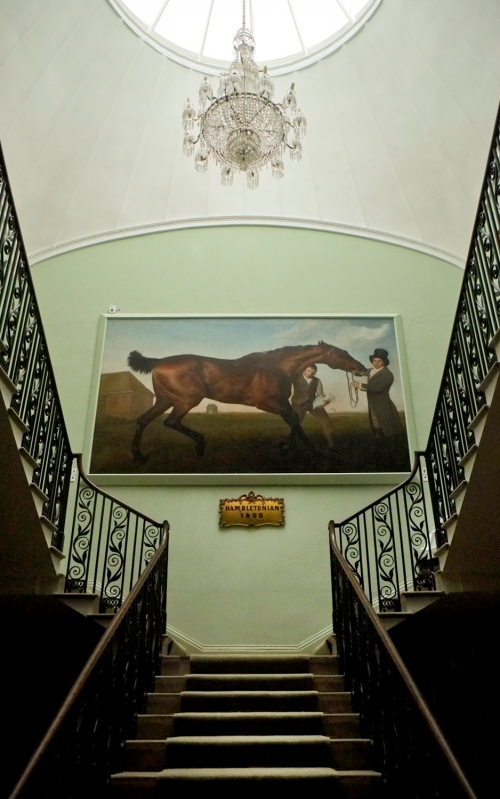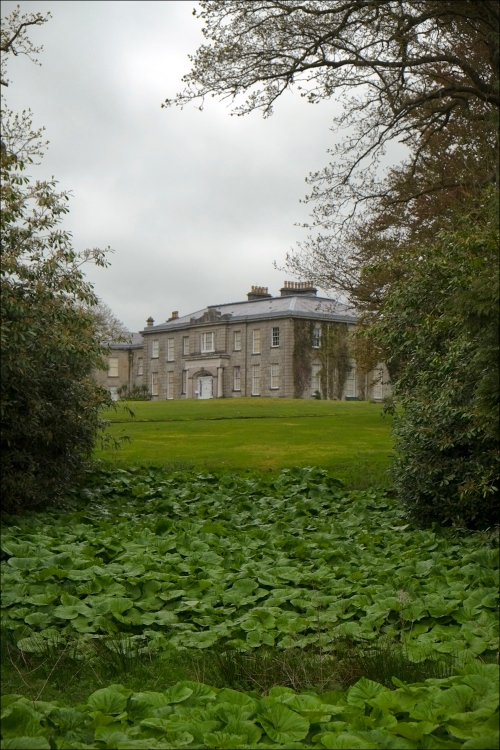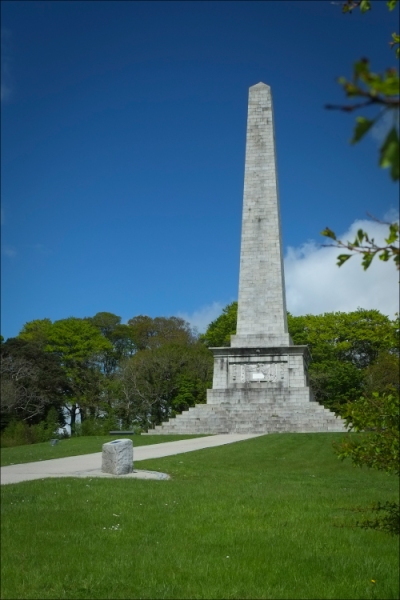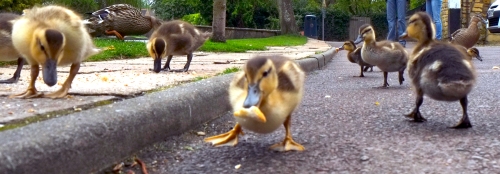Those of you that have followed the blog for a while know that I have ambivalent feeling about graffiti. Sometimes I think that spray paint should be universally outlawed, but then, occasionally, you can’t help but smile.
Tag Archives: Photography
Alicante
Alicante is our favorite coastal city, so far! This historic Mediterranean port has a population of about 400,000. Since the 3rd century BC it has been invaded and conquered by cocky Carthaginians, rapacious Romans, vicious Visigoths, moody Moors, clobbering Castilians, volatile Valencians, rascally Republicans, nasty Nationalists and finally an Armada of Cruise Liners.
The bustling core of the old city sits right on the waterfront and is full of wide palm tree shaded walking arcades, great historic buildings and a labyrinth of narrow streets and open air markets.
Alicante has two, not to be missed, art museums. Both El Museo de Bellas Artes Gravina (MUBAG) and the Museum of Contemporary Art of Alicante (MCAA) are terrific museums that are the perfect size, big enough to be really interesting and small enough to be experienced in a couple hours. And they’re free. They both house great Spanish collections and, like all great museums, the buildings themselves are terrific works of art.
Bye for now. We’re going to go drink a little.
Farewell to Rostrevor
As night falls on our home exchange let’s take a final look at Rostrevor, the lovely little town in Northern Ireland that we’ve called home for the last month.
Kilbroney Park
Rostrevor is dominated by hugely popular Kilbroney Park.A lovely 97 acre park that starts on the shores of Carlingford Lough and runs 1000′ up the side of Slieve Martin. [portfolio_slideshow id=1622]
Fairy Glen
Fairy Glen is a mile long trail that runs between the town and Kilbroney Park. Tradition has it that the Fairy Glen was the home to many of the “wee folk”. Residents were careful not to use this route after dark as it was widely believed that the fairies could be heard dancing to otherworldly music.
- Fairy Glen
Thristy?
One thing I discovered about Rostrevor is that you won’t die of thrist here.
- The Glenside inn
- Irish National Foresters Hall
- Fearon’s
- The Killiwen Inn
- P. G. Tinnelly
- The Kilbrony
- Patrick Crawford
- Celtic Fjord
- The Corner House Bar
- The Cloughmore Inn
Rostrevor Cemetery
A trip to Rostrevor wouldn’t be complete without a stop at Rostrevor Cemetery, the final resting place of Patrick Murphy, who in 1862 was considered the world’s tallest man. He billed himself as being 8’10” and in some circles as much as 9’3″. His height is debated today, but regardless, he was big. Real big.
- Rostrevor Cemetery
- Celtic Crosses
- Patrick Murphy
- Patrick Murphy’s Grave
We’re slipping out the back door now. Thanks for tuning in.
Lovely Country Lanes or Death Defying Thoroughfares?
We’ve been to Turkey and thought that the driving was totally insane. The completely chaotic behavior of the drivers, the narrowness of the roads and the blaring horns left us rattled to the core. Then we came to Ireland and you know what? The Turks aren’t so bad.
Part of the problem is expectations. Every travel book we’ve read depicts SW Ireland as a land filled with lovely idyllic country roads and romantic windy lanes that fill the heart with joy and a longing for a simpler time when life moved slower and the whole world felt at peace. And it is.
What they neglected to inform us was that these 12’ wide roads can have speed limits as high as 80 kmh and are clogged with all manner of motor vehicles including SUVs, utility vans, cars dragging travel trailers, RVs, 35’ tour buses and 18 wheel freight trucks. And they’re used to it so you damn well better get out of the way. At a B&B in Kilkenny it was explained to us that the width of roads in Ireland was dictated by royal decree to be at least the width of two cows!
- 12′ wide, no center line and no shoulder.
- If you drove this road at the 80 kmh speed limit you’d be careening around corners on two wheels.
- There is a lot of truck traffic on this road. You just get out of the way. Quickly!
- This road is under 12′ wide, has a 80 kmh speed limit and is opened to two way traffic, including tour buses.
- Yes, this is a registered two way road.
- Speed Limit 30 kmh
We were asked to get an insurance rider when we got here. Oh yea, I get it now. And did I mention they drive on the wrong side of the road.
Office of Public Works
We were so pleased with our English National Trust cards that we looked for an Irish equivalent and discovered the OPW, Office of Public Works. The OPW handles over 100 heritage properties in Ireland and the cards, at 16 euros each, is the bargain of the century. It’s true that we may very well be crass American self promoters, but we had to tell them that Office of Public Works is probably not the most promotion savvy name they could have chosen.
Springhill House
Col. George Lenox served in the Irish Volunteers but, after being betrayed by Lord Castlereagh, resigned his commission in disgrace in 1816. As a result of this, combined with his depressive nature, he committed suicide later that year. His wife Olivia is said to haunt the house to this day and is Ireland’s most documented ghost.
- Springhill House
- Stables with Dutch gables
- Courtyard at Springhill House
- Courtyard at Springhill House
- Courtyard at Springhill House
- William Conyngham II and Ann Upton
- Sitting Room at Springhill House
- Wooded path at Springhill House
- Springhill House
Emo Court
Built in 1790 for John Dawson, the first Earl of Portarlington. The Earl died before it’s completion and it has passed through many hands until the outbreak of the First World War in 1914 when the family left for England. It remained unoccupied until 1930 when the house was acquired by the Jesuits. One of the first priests to live here was Father Francis Browne, best known as a brilliant photographer who left behind a definitive record of Irish life during the first half of the 20th century.
Barryscourt Castle
This site has been occupied for over a thousand years. The tower fortress was the home to the Anglo-Norman de Barry family from the 12th century. It may look lovely in the sunshine but to call it a home is a real stretch. It’s primary function was safety not comfort. It was intentionally designed to be very difficult to get in and out of with only one small door, narrow, steep and uneven stone stairways, murder holes and a very nasty little dungeon. It was crowded, damp, smelly, dirty, smokey, drafty and very cold.
- Barryscourt
- Barryscourt
- Barryscourt
Trim Castle
A large Fortress Tower Castle that’s most recent claim to fame is as a location for Braveheart.
- The gatehouse at Trim Castle
- Trim Castle
- Trim Castle
- The view from Trim Castle
Castletown
William Conolly, Speaker of the Irish House of Commons and a Commissioner of the Revenue, was the wealthiest man in Ireland in 1694 when he married Katherine Conyngham. They built Castletown together and William specified that every part had to be made from Irish materials, a fact that would save the property from Nationalist firebombs during the war for independence. Unfortunately William died in 1729, the same the year the house was finished, and never got to enjoy it. But Katherine sure did. She remained in Castletown until her death in 1754 and in order to retain her previous social status after William’s death, she began to spend money at a staggering pace. The parties and drinking were legendary. The combined brewing and vintner bills averaged approximately 600 pounds a year, about $60,000 in today’s money. Katherine, not willing to turn her fortune over to a new man, never remarried. Society ladies criticized her for riding her carriage through the countryside, “too fast and with numerous young men”.
- Castletown House was Ireland’s first winged Palladian home.
- 18th century Italian chandeliers.
- Wooded path.
- 550 acre estate
Kilkenny
We really loved Kilkenny. One of the most vibrant and interesting cities we visited. The Kilkenny Castle and the Art & Design Center create a wonderful cultural hub.
- Kilkenny Castle
- Kilkenny Design Center
- New Building Lane
- Smithwick Brewery
- Public Notice.
- Market Slip
- Irishtown area near Black Abbey Lane.
- Classic pubs are everywhere.
- Elvis’ spiritual home
- I have no idea what it says!
- Kilkenny Castle
Muchross House
One of Ireland’s premier Tudor style mansions, Muckross House was built in 1843 for Henry Arthur Herbert and his wife, the excellent watercolourist Mary Balfour Herbert. Extensive and hugely expensive improvements were undertaken in the 1850s in preparation for the visit of Queen Victoria in 1861. The Herberts were gambling that the Queen would give him a peerage that would correct his failing fortunes. When the Queen returned to London, Prince Albert died, and she quickly forgot all about the Herberts. The cost of these improvements aggravated the Herbert’s financial difficulties and resulted in the sale of the estate.
- Muckross House
- Muckross House
- Muckross House
- View From Muckross House
- View From Muckross House
Aughnanure Castle
This fine example of an Irish Tower Fortress was the family home of Donal O’Flaherty who in 1546 married Grace O’Malley. After Donal’s murder, Grace fled to the family island of St. Claire off the western coast of Ireland and began a lifelong career as the 16th century’s most notorious pirate.
- Aughnanure Castle
- Aughnanure Castle
- Horses At Aughnanure Castle
- Horses At Aughnanure Castle
Tintern Abbey
The present-day remains of Tintern are a mixture of building works covering a 400-year period between 1136 and 1536. In the reign of King Henry VIII, his Dissolution of the Monasteries ended monastic life in England and Wales. On 3 September 1536 Abbot Wyche surrendered Tintern Abbey and the valuables from the Abbey were sent to the royal Treasury. Lead from the roof was sold and the decay of the buildings began.
- Tintern Abbey
- Tintern Abbey
- Tintern Abbey
- View From Tintern Abbey
- Footbridge At Tintern Abbey
- Wooded Path At Tintern Abbey
Drombeg Stone Circle
Also known as the Druid’s Altar, the site was excavated and restored in 1958. A pot was discovered containing the cremated remains of a young adolescent dating from 945 – 830 BC.
- Drombeg Stone Circle
- View from Drombeg Stone Circle
- View from Drombeg Stone Circle
- View from Drombeg Stone Circle
- Drombeg Stone Circle
Hook Head Lighthouse
Hook Head, the oldest lighthouse in Ireland, is said to have found its way into common English usage in the expression “By Hook or by Crook.” It is claimed that Oliver Cromwell vowed to take Waterford by Hook (on the Wexford side of the estuary) or by Crook (a village on the Waterford side).
- Hook Head Anchor
- Hook Head Anchor
- Hook Head Anchor
- Hook Head Anchor
Castletownbere
Castletownbere Harbour was developed as the major fishing port on the Beara Peninsula. Although, like many small communities, Castletownbere has been hit hard by the economic downturn.
- TallonRd
- Grumpy Mama
- Murphy’s Salon
- Murphy’s Barber Shop
- Seaview Bar
- I Have No Idea
- Castletownbere
- Castletownbere
- Silver Dollar Bar
- These Wee Folk Are Everywhere.
- Mary Rose
Besides the usually smattering of imigrants, there appear to be three major clans in Castletownbere, the O’Sheas, the O’Sullivans and the Murphys. The Murphys are by far the most prodigious. There is Murphy’s Funeral Home, Murphy’s Boat Hauling, Murphy’s Fishing, Murphy’s Restaurant, Murphy’s Pub, Murphy’s Fish & Chips, Murphy’s Florist, Murphy’s Party Supplies, Murphy’s Gift Shop and, of course, Murphy’s Irish Stout.
Donegal Castle
The elder Sir Hugh O’Donnell, wealthy chief of the O’Donnell clan, built the castle in 1474. In 1607, after the Nine Years war the leaders of the O’Donnell clan left Ireland in the Flight of the Earls. In 1611 the castle and its lands were granted to an English Captain, Basil Brooke. The keep had been severely damaged by the departing O’Donnells to prevent the castle being used against the Gaelic clans.
The Wendi Files – Part 2
The Wacky Wendi Saga Continues.
- With Pete
- Welcome
- Lost And Alone
- A Little Scary
- More Bus Fun
- Double Decker
- Inspecting Another Fortress
- Dinner In Castletownbeare
- Dizzy
- Druid Sacrifice
- With Bertha
- To The Manor Born
- Outstanding In Her Field
- A Little Big
- Perfect
- Irish Ferry
- Temple Bar – Dublin
- The Wee Folk Museum
- Katherine In Kilkenny
- Our B&B In Port Issac
- Prawns?
- Ace Shopper
- Pie Lust
- Tintern Abbey
- London
- One Too Many
Damn, I like that girl!
On The Edge
“Like many before me, I’ve been called to the sea.” TW
Welcome to the Cliffs of Moher, Ireland’s premier disembarkation point for the netherworld. I don’t mean to demean the sheer awe-inspiring grandeur of the Cliffs. The place is indeed jaw droppingly beautiful. Sadly though, a few folks don’t just come to look, but view it as a more interactive activity. This is a hugely popular tourist attraction so it’s not really in anyone’s best interest to keep an accurate count. In 2008 there were four documented suicides, a relatively small numbers when compared to places like the London Underground which loses 150 – 200 people a year. Bear in mind, the actual number of deaths is not widely known and the vast majority are classified as accidents, but with 30 mph wind gusts and warning signs every few feet, I tend to think of it more as stupidity. We watched at least 50 people ignore the warnings in order to have their picture taken as close to the edge as possible. The last jumper was a young Estonian doctor who bought a one way ticket to Dublin, drove a rented car across the country, walked out of the parking lot directly to the cliff and, without hesitation, she leapt 750’ to the sea below. Oddly, neither the one way ticket nor the CCTV footage was enough to convince officials it was a suicide.
By all means don’t let my love of odd statistics scare you off. Come to this amazingly beautiful place, but be extremely careful. I don’t know if there have been any definitive studies, but can anyone deny that a huge precipice, like a magnet, draws the mind to the edge?
- Cliffs of Moher, County Clare, Ireland
- Cliffs of Moher, County Clare, Ireland
- Cliffs of Moher, County Clare, Ireland
- Cliffs of Moher, County Clare, Ireland
- Caution – Cliffs of Moher, County Clare, Ireland
- Suicide Line – Cliffs of Moher, County Clare, Ireland
Have A Little Trust
On our way to Chester we passed Dunster Castle and were so intrigued by it’s amazing grandeur that we had to stop. When paying the entrance fee to was pointed out to us that if we intended to visit a few properties then the annual family membership to the National Trust was the more economical approach. That’s all Mr. Cheapskate needed to hear. We bought the membership, and began a race through Northern Ireland to get our money’s worth by visiting as many Trust properties as possible. Regardless of the motives, this scheme has allowed us to see some outstanding places and learn a lot about how the landed gentry and obscenely wealthy from as far back as the 17th century lived their lives in Northern Ireland.
Dunster Castle is a fascinating property with a long and exciting history. A stone shell keep was built on this site at the start of the 12th century. The castle survived sieges, battles, civil wars and bankruptsies. The castle has been occupied until the late 20th century when it was turned over to the Trust.
- Dunster Castle
- Dunster Castle
- Dunster Castle
- Dunster Castle
- View from Dunster Castle
- View from Dunster Castle
Castle Ward, built in the 1760s reflects the differing tastes of Lord Bangor and his wife. While the entrance side of the building is done in a classical Palladian style, the opposite side is Georgian Gothic. This differences in style continue throughout the interior of the house with the divide down the center.
- Castle Ward
- Castle Ward
- The Sunken Garden – Castle Ward
- Castle Ward
- The Horse Yard – Castle Ward
- Castle Ward
- The Udder Room – Castle Ward
- Castle Ward
- The View From Castle Ward
- The View From Castle Ward
Charles, 3rd Marquess of Londonderry’s second wife, Lady Frances Anne Vane-Tempest, was the greatest heiress of her time. This infusion of huge new wealth prompted the refurbishment and enlargement of Mount Stewart. While spending £150,000 on the refurbishment, £52 million in today’s money, they only gave £30 to famine relief in Ireland in the 1840s, illustrating the inhumanity that existed within Ireland at the time.
- Mount Stewart
- Mount Stewart
- Mount Stewart
- Mount Stewart
- Mount Stewart
- Mount Stewart
- Mount Stewart
- Mount Stewart
Hambletonian
The horse in this very large painting is Hambletonian, the 18th century’s most celebrated racehorse. He was owned by Sir Henry Vane-Tempest, Sir Stewart’s father in law. In a famous four mile match at Beacon Course in Newmarket on 25 March 1799, Hambletonian won by a neck and was said to have covered 21 feet in a single stride at the finish. Sir Henry had wagered the huge sum of 3,000 guineas ($300,000) on the outcome. Afterwards the horse was the subject of this painting, Hambletonian Rubbing Down, by the great equine artist, George Stubbs. The stable boy, handler and horse all appear agitated and tense. After seeing the painting some of Sir Henry’s detractors commented that it was because the horse had been whipped and treated badly in the race. When Sir Henry heard this he became so distraught that he refused the painting. The 75 year old Stubbs stood firm and refused to alter the image. Over time Sir Henry softened and eventually paid for and took possession of the painting, which today is priceless. Most recently, one of Stubbs paintings was sold by Christies for a record $36 million.
After a visit in 1801, one visitor wrote of the location, “It is impossible not to regret the misapplication of so much treasure upon a spot where no suitable Desmesne can be created…where the salt spray begins to corrode this sumptuous pile of Grecian Architecture, and the imagination anticipating the distant period weeps over the splendid Ruin, a sad monument of human folly.”
- Bishops Gate – Downhill Demesne
- Downhill Demesne
- Mussenden Temple – Downhill Demesne
- Downhill Demesne
- Mussenden Temple – Downhill Demesne
- Downhill Demesne
The columns are the remains of a causeway built by the giant, Finn MacCool, who was challenged to a fight by the Scottish giant Benandonner. Finn accepted the challenge and built the causeway across the North Channel so that the two giants could meet.
- Giant’s Causeway
- Giant’s Causeway
- Giant’s Causeway
- Giant’s Causeway
- Giant’s Causeway
Carrick-a-Rede Rope Bridge links the mainland to the tiny island of Carrickarede.
- Carrick-a-Rede
- Carrick-a-Rede
- Carrick-a-Rede
- Carrick-a-Rede
- Carrick-a-Rede
- Carrick-a-Rede
Castle Coole was constructed at a cost of £57,000 in 1798, equivalent to approximately £20 million today.
- Castle Coole
- Castle Coole
- Castle Coole
Early on the morning of March 22, 1955, 72 year old Lady Enniskillen discovered a fire on the first floor landing. She ran to nearby Killymanamly House and telephoned the elderly 5th Earl of Enniskillen , at the Ulster Club in Belfast. He is said to have cried “What the hell do you think I can do about it?”.
- Florence Court
- Florence Court
- The canons were won in a card game at Castle Coole
The Argory
In 1852 the Royal Navy troopship HMS Birkenhead. struck the rocks off Danger Point, South Africa. Prior to this, evacuation was a “every man for himself affair”. When Captain Shelton saw the sailors rushing to the lifeboats cried “women and children first”. This has come to be known as “the Birkenhead Protocol”.
You Should Have Been Here Friday
If there are nicer people in this world then the Irish, we sure haven’t met them. Not only are they friendly, helpful and curious, but also seem to take it as a personal responsibility that we enjoy their country. Every person we’ve met has apologized for the weather as if the country’s climate has had the effrontery to disappoint us in some way. To a man, everyone has said “You should have been here last Friday”. We were here last Friday and it was indeed beautiful. Apparently it was the most beautiful day of the year so far and perhaps has the potential of being the most beautiful day of the year to come. We’re from a place with unsettled everchanging weather and have come to accept beautiful days as a special treat and not the norm. But then you don’t really come to a place like Ireland for the weather. You come for the charming people, the green hills, the music and, of course, the beer.
- Victoria Lock looking west towards Newry
- Carlingford Lough
- Near Victoria Lock
- Victoria Lock looking west towards Newry
- The hills above Rostrevor
- County Down
- Seaview, NI
- Near Kilough in County Down
- Strangeford, NI
- Strangeford Ferry
- Carlingford, Ireland
- County Down
- County Down
- County Down
- County Down
- County Down
- Kilkeel, County Down
- St. John’s Point
- Warrenpoint, NI
We’re situated in Rostrevor, County Down, Northern Ireland, on the banks of the Carlingford Lough, at the foot of the Mourne Mountains. A lovely place criscrossed with very narrow winding roads and longstanding stone walls.
The lovely home we’re in sits next to a monument for Major General Robert Ross. The Major General was born in Rostrevor and attended Trinity College in Dublin before being sent to American in the War of 1812 to avenge American atrocities in the Battle of York (Toronto) where American troops were accused of many acts of vandalism, looting and burning of both private & public property.
Ross quickly captured Washington and burnt down the White House. Rumor has it that he intended to build a home for himself on the site but was shot at the Battle of Baltimore and fled to Halifax, Nova Scotia where he died and is buried. A villian to some but a hero to many.
Hogwarts and Beyond
The Cotswolds
The Cotswolds are a range of hills in southwestern and west-central England, an area roughly 25 miles wide by 90 miles long, filled with lovely restored mill towns, some as old as the 17th century.
- Lower Slaughter
- Upper Slaughter
- Upper Slaughter
- Bourton on the Water
- Bourton on the Water
- Signs of the Past
- Canal Boats in the Cotswolds
The Gloucester Cathedral
Over 1300 years old, the Gloucester Cathedral is an outstanding example of Gothic Architecture. In recent years it has become even more famous as Hogwarts School of Witchcraft and Wizardry.
- Gloucester Cathedral
- Gloucester Cathedral
- Cloisters
- Cloisters Courtyard




























